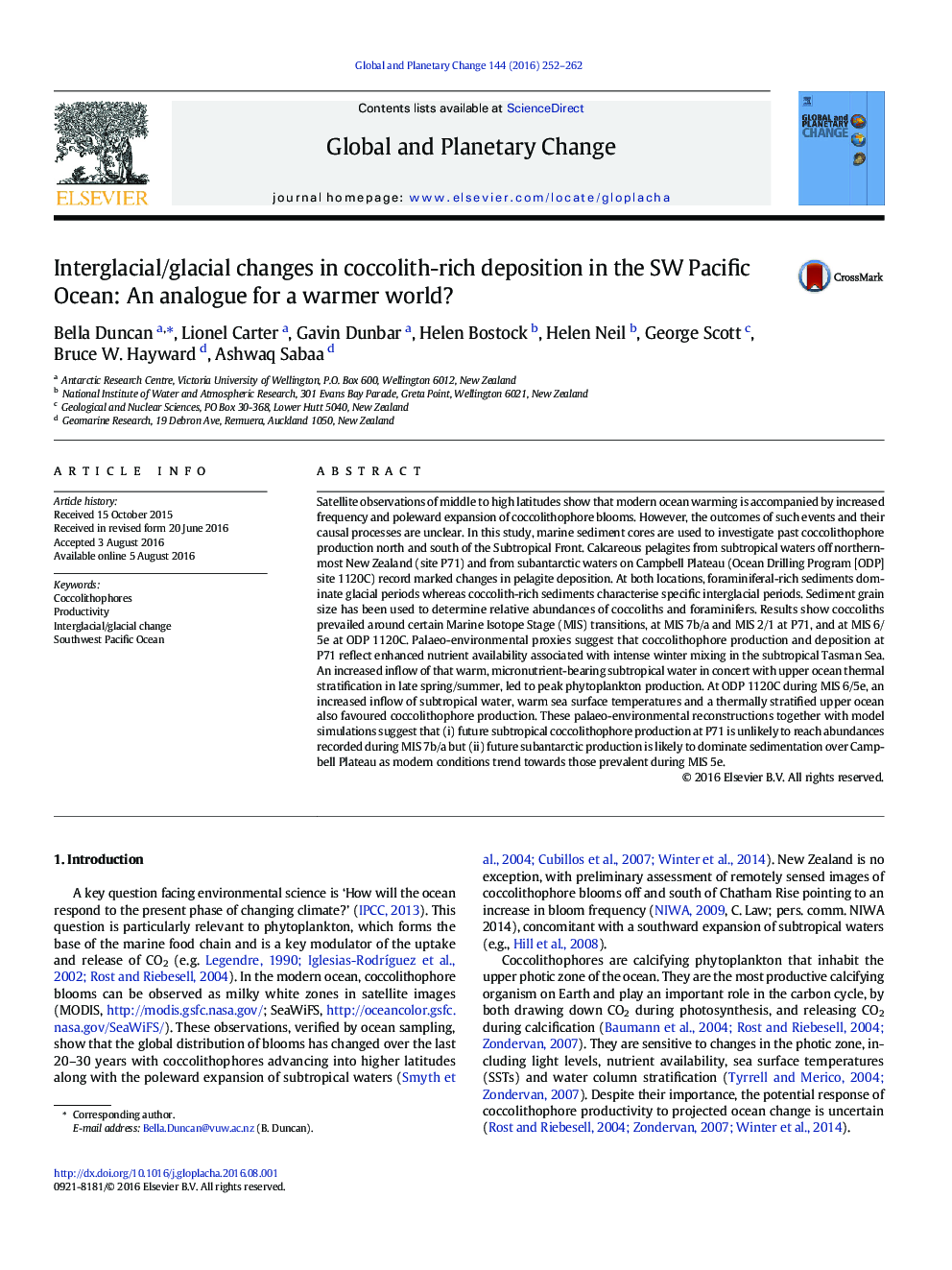| کد مقاله | کد نشریه | سال انتشار | مقاله انگلیسی | نسخه تمام متن |
|---|---|---|---|---|
| 4463283 | 1621638 | 2016 | 11 صفحه PDF | دانلود رایگان |
• Interglacial stages favour coccolith deposition in SW Pacific sediments.
• Coccolith deposition differs north and south of the Subtropical Front.
• Deposition favoured in stages 1 and 7 in subtropics and stage 5 in subantarctics.
• Modern coccolithophore blooms increase as subantarctics approach stage 5 conditions.
• Studies of past coccolith deposition informs future changes in SW Pacific.
Satellite observations of middle to high latitudes show that modern ocean warming is accompanied by increased frequency and poleward expansion of coccolithophore blooms. However, the outcomes of such events and their causal processes are unclear. In this study, marine sediment cores are used to investigate past coccolithophore production north and south of the Subtropical Front. Calcareous pelagites from subtropical waters off northernmost New Zealand (site P71) and from subantarctic waters on Campbell Plateau (Ocean Drilling Program [ODP] site 1120C) record marked changes in pelagite deposition. At both locations, foraminiferal-rich sediments dominate glacial periods whereas coccolith-rich sediments characterise specific interglacial periods. Sediment grain size has been used to determine relative abundances of coccoliths and foraminifers. Results show coccoliths prevailed around certain Marine Isotope Stage (MIS) transitions, at MIS 7b/a and MIS 2/1 at P71, and at MIS 6/5e at ODP 1120C. Palaeo-environmental proxies suggest that coccolithophore production and deposition at P71 reflect enhanced nutrient availability associated with intense winter mixing in the subtropical Tasman Sea. An increased inflow of that warm, micronutrient-bearing subtropical water in concert with upper ocean thermal stratification in late spring/summer, led to peak phytoplankton production. At ODP 1120C during MIS 6/5e, an increased inflow of subtropical water, warm sea surface temperatures and a thermally stratified upper ocean also favoured coccolithophore production. These palaeo-environmental reconstructions together with model simulations suggest that (i) future subtropical coccolithophore production at P71 is unlikely to reach abundances recorded during MIS 7b/a but (ii) future subantarctic production is likely to dominate sedimentation over Campbell Plateau as modern conditions trend towards those prevalent during MIS 5e.
Journal: Global and Planetary Change - Volume 144, September 2016, Pages 252–262
